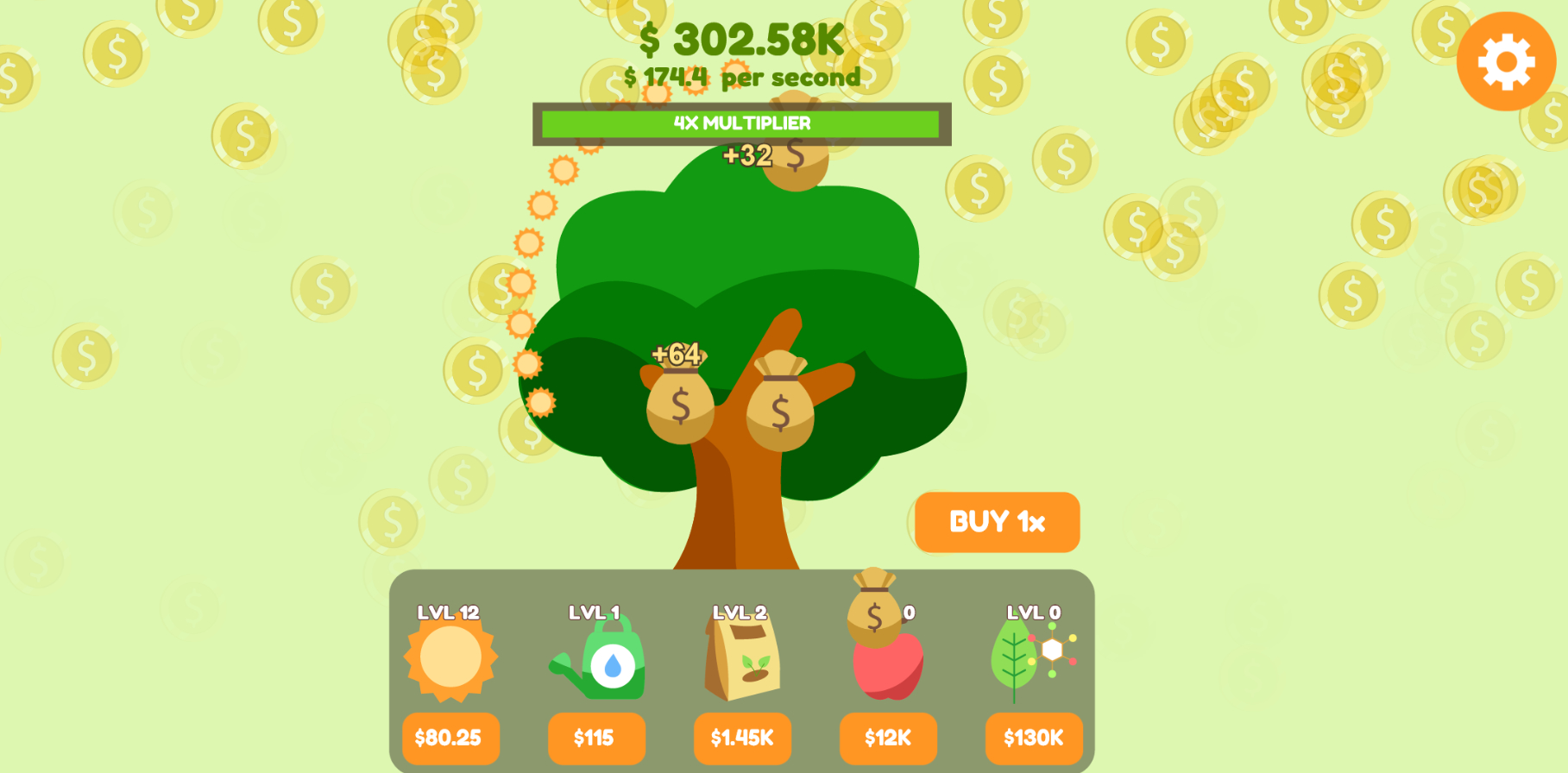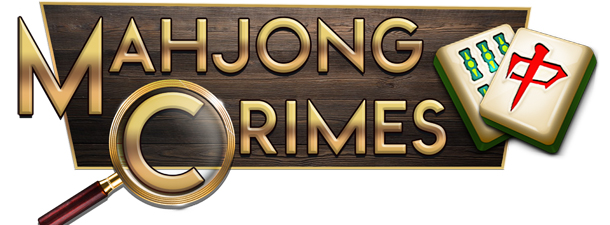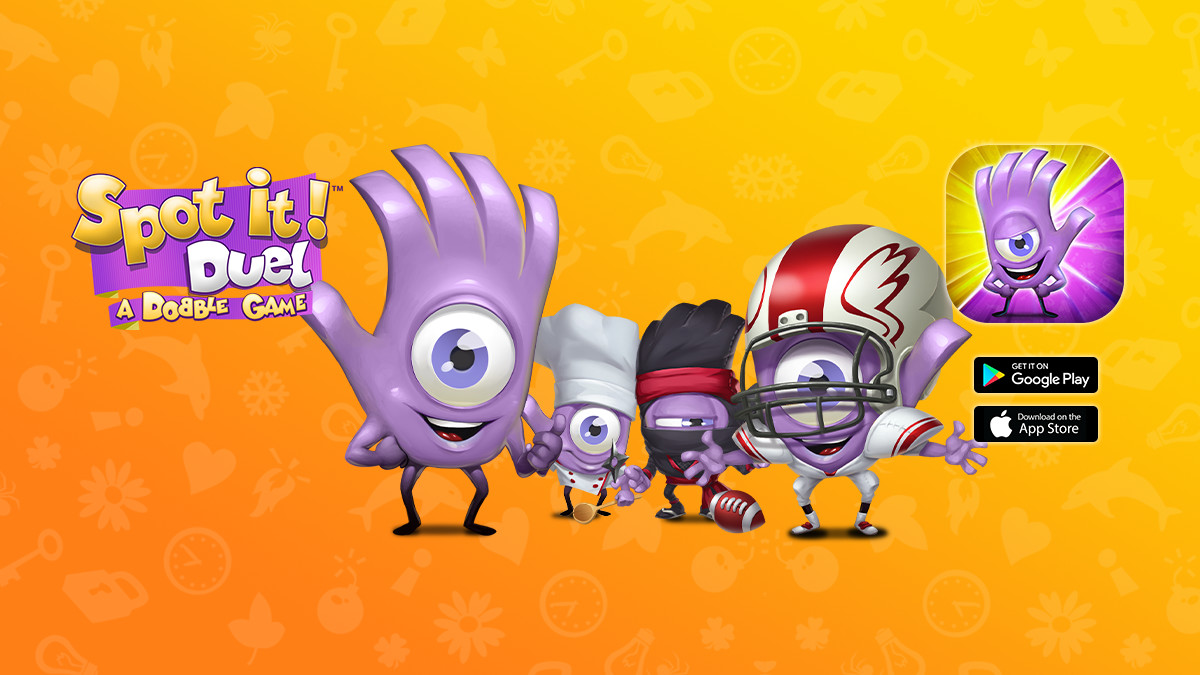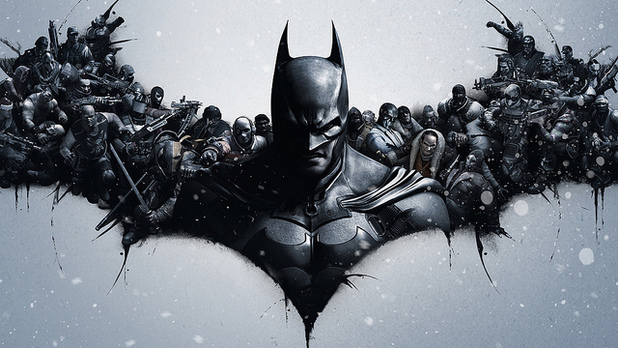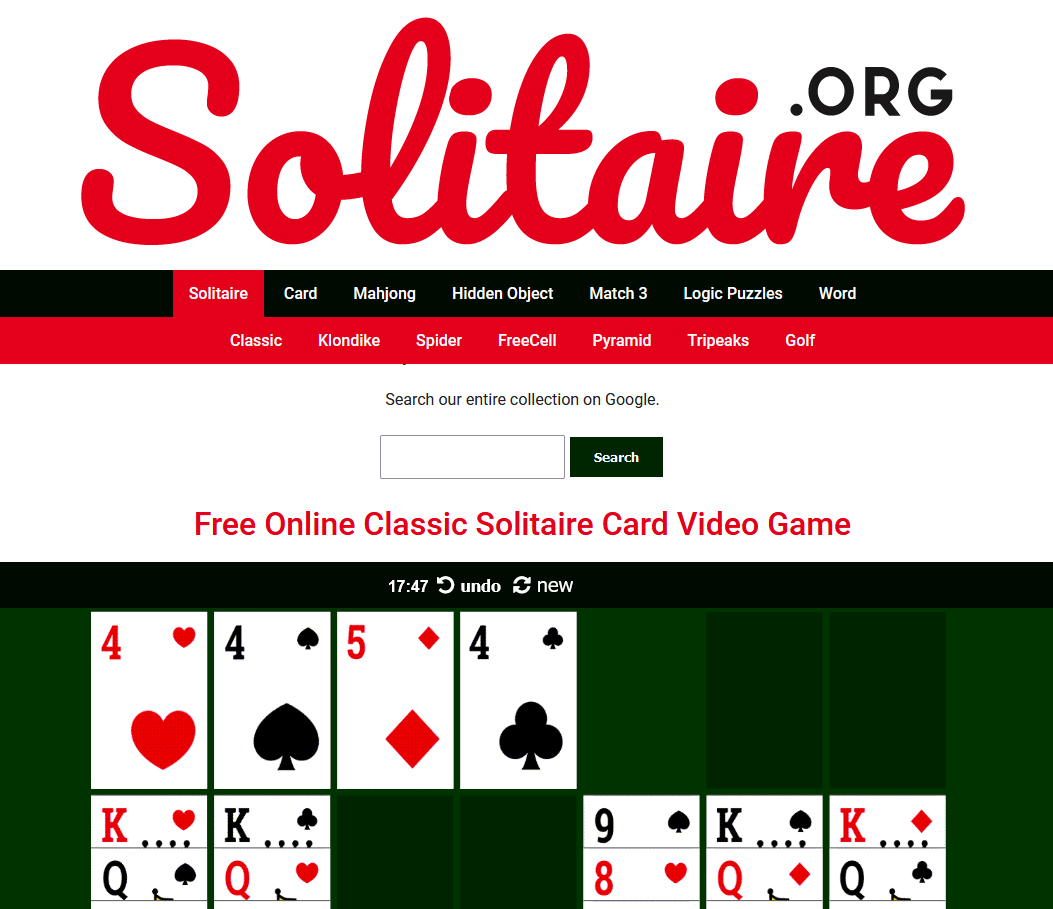Looney Labs: Interview with Andy and Kristin Looney




Looney Labs is famous for their colorful triangular “pyramid” playing pieces. Originally popularized through word-of-mouth, community events, and Comic Cons, Looney Labs creations have become favorites amongst gamers—largely because the games can be customized, added to, and broadened based on the creativity of and communication between the players.
Recently, the husband and wife duo discussed the history of their company, their games, and their hopes for the future.
Meagan Meehan (MM) of Entertainment Vine: Your company has a very interesting history to say the least…essentially, this all started because of a science fiction novel. When you were kids, could you ever have imagined the careers and paths your lives have taken?
Andy: When I was a kid, I always hated being asked, “What do you want to be when you grow up?” because I didn’t have a good answer. I had many interests, but I didn’t know “game designer” was a thing you could be. In those days, board games never included the designer’s names, so it wasn’t clear that actual, individual people made them. It seemed more like something whole companies created together. So, no, I never would have imagined I’d become a famous game inventor someday.
Kristin: I studied computer science in college and started a career as an electronics engineer designing telemetry ground systems at NASA. I never took a business class in school and starting and running my own business was never a thing I ever imagined doing. But I found myself sharing an office with this guy named Andy Looney who had written a novel about a city where everyone played this game called Icehouse that was played with these little gaming pyramids. We became close friends and started working on all sorts of creative projects together.
MM: Andy, were you always interested in science fiction? What prompted you to start writing and how did you find publishers?
Andy: Yes, I’ve been a fan of sci-fi since I was a kid. My dad and older brothers read & watched sci-fi stories, which made them seem cool to me, so I read and watched them too. And when I wanted to start making up my own stories, sci-fi was what I naturally tended to focus on. I got more and more into writing as friends and teachers who read my work told me they liked it and encouraged me to write more. But finding publishers was something I never had any patience for… I just wanted to create. I hate the task of promoting my creations. Fortunately, I paired up with Kristin! One of the many titles she’s earned over the years is She Who Makes Things Happen.
MM: Overall, how many books did you publish, do you still write, and is science fiction your sole genre?
Andy: I’ve written a few unpublished books, but The Empty City is the only novel I’ve published. I basically put my writing career on the back burner when I became a game designer instead. Nowadays my writing is more focused on game rules, sales pitches, business plans, and social media posts than fiction. But I still dabble in fiction. As for non-fiction, we recently published my coffee table book full of photos I’ve taken in the coffeeshops in Amsterdam over the last 20 years.


Andy: The Empty City is a rather odd book, actually. It’s a rambling story about one man’s search for romance and entertainment in a world shifted slightly out of the reality of our own. It’s not really sci-fi although it does have a bit of time travel and life on other planets and other such things. The main thing is, I described an imaginary (at the time) board game played with small colorful pyramids, which some of the characters in the story play obsessively, and my friends who read it became so interested in that game that we created a real version as a result. And that led to everything that is Looney Labs.
MM: The popularity of your fiction prompted fan interest in the game…so you invented one! Prior to this, had you ever thought of becoming a game designer?
Andy: Nope! Even after creating that first game I didn’t think of game design as a thing I could actually do. It wasn’t until after I’d accidentally invented a video game (as a programmer trying out new concepts) that I started to try inventing games on purpose.
MM: How long did it take to think up the play pattern for the first game and then what was it like to actually make the game?
Andy: I think it was about a year after writing that first short story and the time when we had a real game we could play that was based on the one I described. It was AMAZINGLY COOL to have a real-life version of my imaginary game!
MM: Kristin, you met Andy at work, how did you learn about his science fiction novel and game?
Kristin: Andy and I shared an office at work, and had become great friends, but we didn’t socialize outside of work. So our friends didn’t overlap. When he needed a group to test his first set of written rules, he asked me to invite a group of my friends over for him to test them on. I played the game before reading the story that inspired it – he brought me in as someone who knew nothing about it, to find out if the written rules would explain the game well enough for me and my friends to learn how to play the game correctly. It’s a process we now call Trial By Rulesheet. I was hooked – and spent the rest of the weekend making a set of pyramids out of a modeling clay called Super Sculpy, since Andy had taken his set home with him, and it was the only set that existed.
MM: You also helped Andy create the early pyramid pieces, Kristin, so what was that process like?
Kristin: We made pyramids out of a bunch of different materials in those early days. When we decided we wanted to run a tournament, and needed more sets than existed, we got a friend with a basement full of woodworking equipment to make us 4 wooden sets which we painted with acrylic paints. Everyone who played in the tournament wanted to know how/when they could buy a set – so later that year we made 100 signed and numbered poured acrylic sets that we sold to our earliest fans. But that process was too difficult and inefficient and we couldn’t keep making sets that way. So next, we made a run of pre-punched fold together paper pyramids, and later we hired a real woodworking factory to build a jig and do a run of wood pieces – which we stained with leather dyes in our basement. Andy and I have made a lot of hand-made pyramids together in those early days.
MM: You two ended up getting married, which makes this one of the most romantic “game company” stories I’ve ever written about! At your wedding, did you include any references to the game, like little pyramid placeholders, etc.?
Kristin: We got married before the pyramid thing had really gone very far, so no. But my bridal shower was lego-themed! We just had our 28th wedding anniversary. If you have a chance to marry your best friend who you love creating crazy fun projects and products with – go for it. It has worked out really well for us.
MM: Back to that first game, how did you promote it and how much did Comic Cons and similar events help you out?
Kristin: Our earliest promotional efforts were at a science fiction convention in the Washington DC area. We held the 1st International Icehouse Tournament at a little convention called Disclave in 1989. It was so much fun! We ran our annual tournament at this con for 5 years, until the convention folded, and the tournament had to find a new home. Each year we built up a larger and larger following for the game and added more and more names to our Icehouse Mailing List. All of this was before social media existed. The internet existed for email, mostly at universities and at geeky jobs like NASA, but the world wide web hadn’t been invented yet. We collected physical mailing addresses from new players, and added them to the list of people we mailed out a little newsletter called Hypothermia. It was filled with stories and strategy tips and an invitation to whatever event we were running the game at next. In later years we had an active community of email mailing lists, then forums. Now our fan community is in Facebook Groups.
MM: From the success of that first pyramid game, you branched out into many more. So, which are your favorites and which have been most popular among fans?


Andy: I designed almost 30 different games for the pyramids and many of them are pretty great, but my favorite game for the pyramids is Homeworlds, designed by my lifelong friend John Cooper. Homeworlds is a complex, interstellar space game, which is also a pure abstract strategy game, often compared to chess in its depth and replayability. I love this game but it’s so difficult to master that it’s hard to find people to play it with, which is why I started awarding really cool limited-edition medals I had made, which say “I beat Andy Looney in a game of Homeworlds.” I’m trying to create a “gunslinger culture,” as I like to call it, in which people feel inspired to learn the game so that they can challenge me and hopefully win that medal. I’ve given out 17 so far.
MM: The new edition of “Zendo” uses shapes aside from pyramids. Did you enjoy branching out like that?
Andy: That process was more challenging than I expected, actually, but I’m very pleased with the end result. But it took over two years of tinkering with various shapes before we settled on the set that works. At first, I thought cubes and domes would work, but after getting some 3D printed prototypes made, we realized they didn’t work as well as we thought they would, and tried various other shapes before settling on blocks, wedges, and pyramids.
MM: Your wonderful new product “Pyramid Arcade” includes twenty-two games! What are your favorite things about “Pyramid Arcade” and have you ever been truly amazed by a game a fan has thought up for it?
Kristin: I love how pretty the box is, and how you have everything you need to play so many truly amazing games. Everything looks like it belongs together and it’s easy to pull it down off the shelf and invite a group of people to play some pyramid games together. In the old days everything was DIY – you bought rules and pyramids separately, and stored them in whatever, and it was much harder to convince non-gamers to play. Now it’s easy to pull almost anyone in!
Andy: I like to describe Pyramid Arcade as “the greatest thing I’ve ever made” and it’s hard to imagine ever topping it, since it’s the culmination of decades of iterative design and ideas built upon ideas built upon ideas. My favorite thing about the pyramids is the depth they offer, and the way we keep discovering more new ways to play with them. I’ve been amazed time and time again over the years as new ideas keep popping up. It seems so obvious now that these pieces, like a deck of playing cards, can be used for an endless series of different games, but at first we were locked into the single-game way of thinking. It took 8 years of playing that first game before we had the realization that the pieces could be interpreted and manipulated in so many different ways and started intentionally designing new pyramid games. Soon we had several cool games, then dozens, then we started hearing from fans who had invented their own games. And I’m still being surprised by the new ideas fans, as well as me, keep having. The most amazing thing is the endlessness. Just when you think we must have already thought of all the ways you could use these pyramids, someone will come up with something else totally new.
MM: Your instruction booklets and box art are *really* well thought out…how long do they take to put together and how do you get the designers for the boxes? The art on the “Pyramid Arcade” box is gorgeous.
Andy: We’re still a very small company so we don’t have enough day-to-day work in game illustrations and packaging to require someone to do that full-time. Instead, we hire independent artists and designers to work on each game with a single-project focus. This allows us to hire various artists with different styles for different games, and we have some excellent designers on call.
Kristin: For Pyramid Arcade, we wanted to really knock it out of the park, as they say, so we chose the team who’d already proven themselves with the updating of our company logo and several other projects, Other Studio in Chicago, led by Eileen Tjan. We really love the work she and her team did for us, on that and every other project they’ve done for us.
MM: You travel all over the country often as guests at conventions. Do you find this really helps you raise awareness of your brand?
Andy: I think it does, yes! When someone has the experience of actually meeting us, it stays with them. They think of us as real people, not just a faceless corporation, and I think that really helps build fan devotion. It’s all about the human connection, you know?
Kristin: We love being guests at conventions and getting to know our fans! And yes, I do think it’s great for brand awareness! It doesn’t matter where we are, people see my tie dye and bandana and lab coat and shout, “Looney Labs is here!” Conventions and trade shows also offer an excellent chance to teach the “alpha gamers” how to play our games and get them hooked enough to go home and teach their friends. I love win-win situations, and attending conventions is always a win for everyone involved.
MM: What opportunities and experiences has founding Looney Labs provided you?
Andy: Too many to list! Not sure where to even start with this question. Running our own company to publish and promote my creations has been so fulfilling and wonderful that I can’t imagine what my life would be like if we hadn’t made this choice and followed our dreams.
MM: What is most challenging about owning your own company and what advice would you give to aspiring game company founders?
Kristin: There is never enough time. We are good at making sure we take time to play, but be it play or work we are always running so hard, trying to do everything. There are always more ideas and opportunities than there is time and money to work on. Learn to have a stop doing list – it is so hard but oh so important.
MM: Is there anything else that you would like to mention?
Andy: We haven’t talked about any of my other games! When I’m asked which is my favorite of my games, I have to say Fluxx simply because it’s done so much for us. And even after creating 25 different versions (literally!) I’m still not tired of playing Fluxx and I’m still finding new ways to make each version unique. I also have a game about dessert which everyone likes a lot, called Just Desserts, and I’m always very proud of my time travel card game, Chrononauts. In fact, I’m working on a new time travel game right now with the Star Trek license! But in my heart of hearts, the pyramids will always be my true favorite.
Kristin: I want to mention Andy’s new card game Get the MacGuffin. It came out earlier this year, so you likely have not heard of it yet. Andy invented it on Fluxx’s 21st birthday – and it is REALLY fantastic. The game takes only 5 minutes to play, and works for 2-11 players. So it will entertain most any size crowd, for whatever time you have to hang out playing a fun little card game. We have been running Get the MacGuffin Raffle Tournaments at conventions all over the country all year, and will continue to do so for years to come as it’s the perfect tournament structure – please sign up for our mailing list (looneylabs.com/newsletter) so we can let you know if we are ever running an event nearby where you live! I hope we get a chance to meet you someday and get to play some pyramid games together!
MM: Where can someone buy your book and this amazing game?
Kristin: Look for a copy of Pyramid Arcade in your local area game store, or buy it online from Looney Labs, and you can buy a copy of Andy’s original novel at our website too! Thanks for playing and buying our games!
* * * * *
To learn more, visit the official Looney Labs website.
